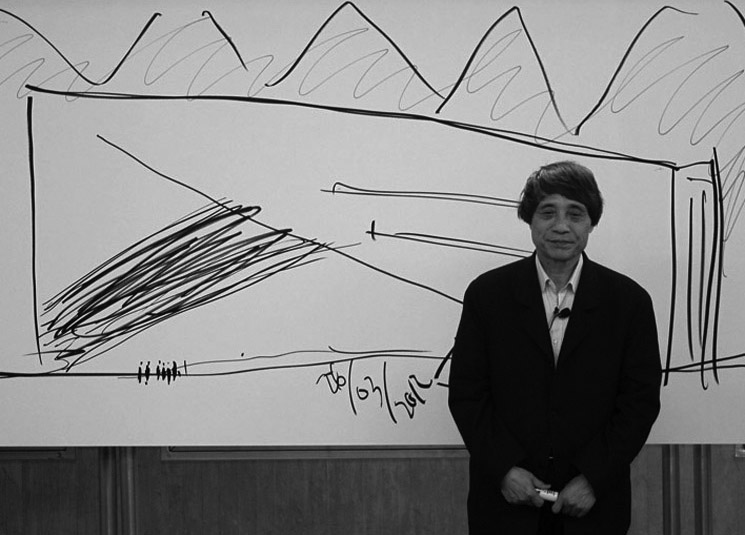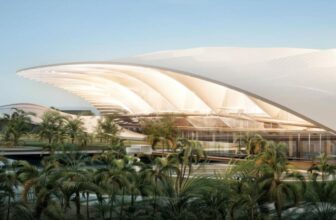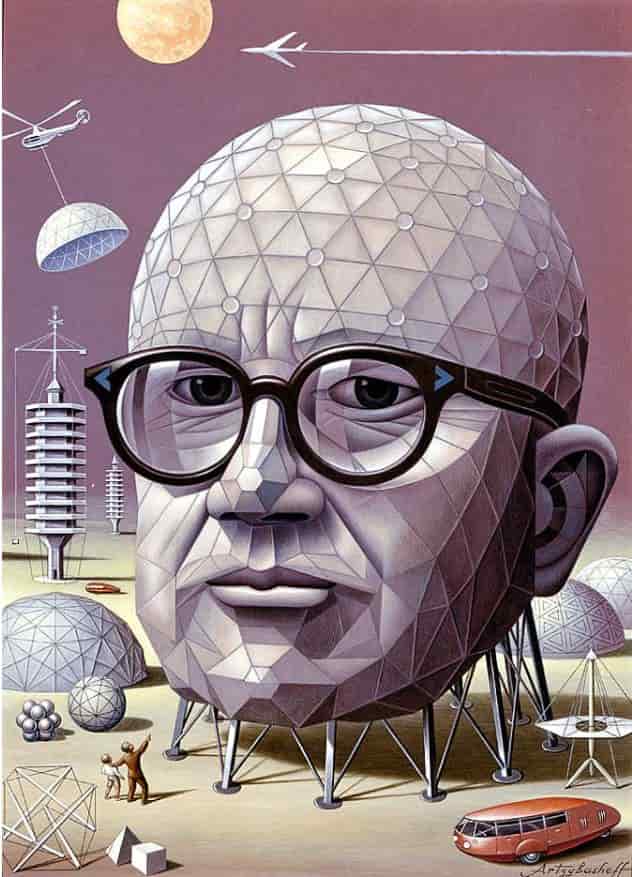
[ad_1]
The Pritzker prize winner, Tadao Ando architect is renowned for his complex play of lights which fascinates all of us. Play of light obviously brings the play of shadows with itself which makes his work more interesting.
The use of concrete and the connection with nature is what we can find in Tadao Ando architecture. His work is the blend of traditional Japanese architecture and modernism.
The Journey of Tadao Ando:
Japanese born Tadao Ando is a self-taught architect. He was born in 1941 in Osaka and started his career as a truck driver and professional boxer.
On his different trips for boxing, he traveled across the world and explored different architectural styles and that’s how his interest in design started.
He then moved to the creative field by learning architecture through apprenticeships, night classes, and making visits to the famous buildings across the world.

His design career started with carpentry, since childhood, he was fascinated by the use of woods and attended many workshops for that. His first design works include small wooden houses and furniture.
He started with his own firm in 1979 in Osaka and soon gained much fame.
Tadao Ando design philosophy and characteristics:
- Light is the defining element of Tadao Ando Architecture.
- Tadao Ando believes the buildings require being safe from the external environment therefore the walls need to be without openings. At the same time, the interiors should be satisfying and must include nature.
- Ando’s architectural style is known as ‘haiku’ effect. It can be described as nothingness and empty spaces to highlight the beauty of simplicity.
- The natural elements; sun, rain, wind, temperature, precipitation, etc become a part of his contemporary work. With including these natural elements he wanted to make the users aware of their interaction with space.
- Use of concrete is one of the defining features of Tadao Ando architecture.
- His buildings have great use of concrete inspired by the works of Le Corbusier and Louis Kahn. His smooth concrete walls have no ornamentation at all; they emphasize the passage of time with the play of natural light and shadows.
- His concrete walls have great geometric compositions of squares, circles, and angles.
- He masters the use of nature, light, and space. Many of his works include the use of natural light and courtyards.
- The courtyard he designs mostly includes pavements and very little vegetation.
- Tadao’s architecture is famous for Critical Regionalism which is described as “reflecting the culture of the region through design and materials”.
- Two main materials that Tadao Ando’s works are concrete and glass.
- Tadao Ando believes designing complex circulation with an appearance of simplicity.
Some of the best Tadao Ando buildings:
Tadao Ando buildings have many similarities yet all of them are very different from each other. Let’s learn about some of them-
Church of the light, Japan:
Tadao Ando church of light is the most renowned work among all his other buildings. This building is the perfect example of his philosophy; the connection between architecture and nature. The design is so minimal in the concrete finish that it gives a sense of peace and tranquility. The solid concrete structure adds darkness to the church which creates a meditative place.
The main highlight of this building is a cruciform slit in the building facade facing the east. This allows the light to pour inside the church and illuminates the dark volume early in the morning.
Light church is a treat where one forgets about the outside world and enjoys the peace and calmness.
4 x 4 house, Japan:
Tadao Ando 4 x 4 house is a private residence on a beachfront site. The residence rises in the form of a tower on a small module size of 4 meters x 4 meters.
The residence is designed in such a way that anyone inside the building can see only in just one direction- towards the sea. The fixed glass being the viewpoint and the structural walls created a frame.
The glass cube crowning the tower forms hierarchy and is its most distinctive feature.
After the completion of this house, another client approached Tadao Ando for the construction of a similar house on the adjacent site. 4 x 4 house is one of the best examples in the Tadao Ando house collection.
Today two similar houses stand facing the beach in concrete finish; another structure designed keeping the nature in mind.
Water Temple, Japan:
Tadao Ando Water Temple is also known as Honpukuji is one of the most famous Buddhist temples. Water Temple has two main parts: the main entrance space and the semi-buried space. The Water Temple is full of nature; he makes the perfect use of sky, water, and light to create different spaces that give different feelings.
The building starts with a long and narrow space surrounded by white walls, sand, and grass to give a sense of peace. This space then leads to an open space surrounded by lotus, pond, and sky setting a mood of pleasure. A dark and steep staircase stars from this open space which leads to a sacred underground bright red-colored main hall. The building tells a story with a series of different spaces.
Chichu Art Museum, Japan:
Chichu Art Museum is designed keeping in mind the connection between people and nature. Set on a mountain near the Seto Island Sea, the museum is mostly constructed underground by carving the mountain. The concept was thought keeping in mind the sea view, Tadao Ando didn’t want to obstruct the beautiful natural scenery.
Tadao Ando experimented with many shapes in this museum, as building underground there was no issue of the form. The geometric skylights float above the green spaces; the museum is a perfect play of light and dark. The skylights above the voids are the only visible part of the museum from outside. It is an architectural marvel designed by Tadao Ando with no visible form in the hills of Japan.
Pulitzer Arts Foundation, America:
Pulitzer arts foundation is the first free-standing public structure in the United States by Tadao Ando architect. A central water court and the use of opening in the building have been the most distinctive features. The building is planned in such a way that it shares the courtyard with the neighboring building; this makes the visitors visit both the buildings. The focuses of the building are light and water and the obvious use of concrete. The minimalist approach for this building helps in highlighting the art which is the main purpose of the museum.
The building creates a serene setting both for the arts to be displayed and the urban landscape.
Studying the concrete:
Tadao Ando architecture in itself is a study about concrete. Architects thought concrete as the building’s hidden layer whereas Ando considered it as the main element and used it in its true form.
The use of concrete in his buildings highlights the concept of sensation and physical experiences. It also gives a sense of cleanliness and weightlessness.
Tadao Ando concrete and light combination brings a minimal and unique touch to his buildings.
He is among one of the first architects to embrace this material and no doubt why Tadao Ando and concrete are not two separate things. Tadao Ando is an iconic name in Japanese architecture. Concrete is the main focus in Tadao Ando architecture, he also incorporates light, water, sky, and many other natural elements in his projects. Tadao Ando changed the language of architecture with his unorthodox approach towards design.
[ad_2]





